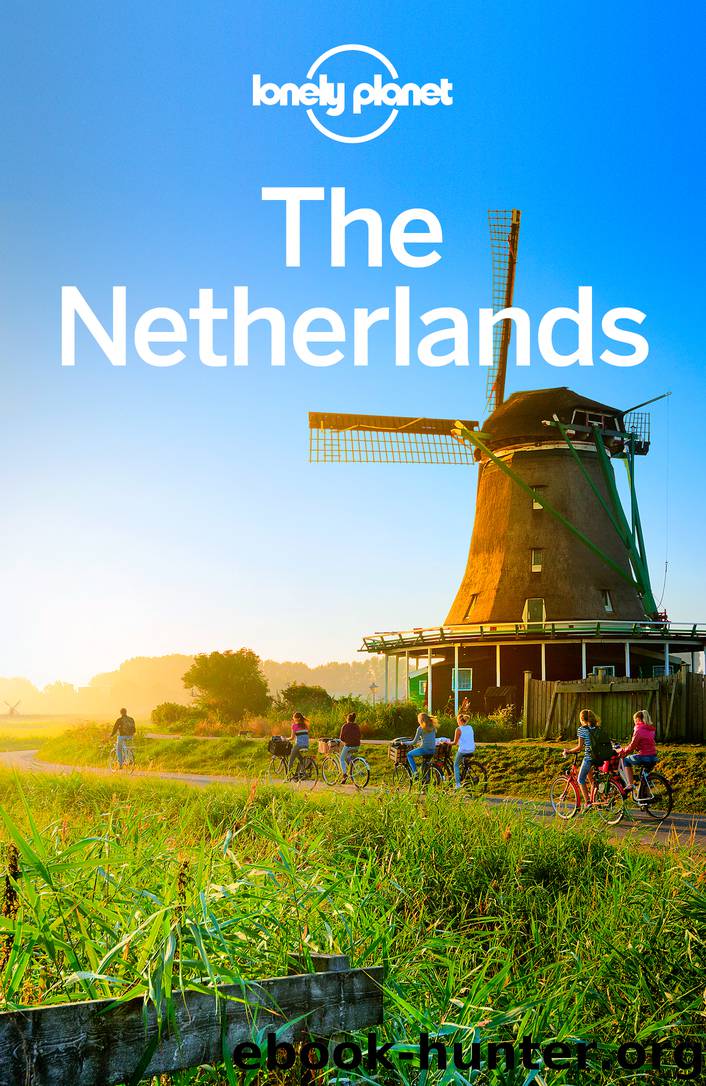Lonely Planet The Netherlands by Lonely Planet

Author:Lonely Planet
Language: eng
Format: epub
Publisher: Lonely Planet
DUTCH WINDMILLS
Long before they became a Dutch icon, the earliest known windmills appeared in the 13th century, simply built around a tree trunk. The next leap in technology came 100 years later, when a series of gears ensured the mill could be used for all manner of activities, the most important of which was pumping water. Hundreds of these windmills were soon built on dykes throughout Holland and the mass drainage of land began.
Technology advanced again in the 16th century with the invention of the rotating cap mill. Rather than having to turn the huge body of the mill to face the wind, the operators could rotate just the tip, which contained the hub of the sails. This made it possible for mills to be operated by just one person.
In addition to pumping water, mills were used for many other industrial purposes, such as sawing wood, making clay for pottery and, most importantly for art lovers, crushing the pigments used by painters.
By the mid-19th century there were more than 10,000 windmills operating in all parts of the Netherlands. But the invention of the steam engine soon made them obsolete. By the end of the 20th century there were only 950 operable windmills left, but this number has stabilised and there is great interest in preserving the survivors. The Dutch government runs a three-year school for prospective windmill operators, who must be licensed.
Running one of the mills on a windy day is as complex as being the skipper of a large sailing ship, and anyone who has been inside a mill and listened to the massive timbers creaking will be aware of the similarities. The greatest hazard is a runaway, when the sails begin turning so fast that they can't be slowed down. This frequently ends in catastrophe as the mill remorselessly tears itself apart.
These days you're more likely to encounter turbine-powered wind farms in the countryside than rows of windmills but there are still plenty of opportunities countrywide.
Kinderdijk, near Rotterdam, has oodles of windmills in a classic polder setting (areas surrounded by dykes where water can be artificially controlled). To see mills operating and learn how they work, head to Zaanse Schans (www.zaanseschans.nl; Zaans Museum; h9am-5pm) near Amsterdam.
Just about every operable windmill in the nation is open to visitors on National Mill Day, usually on the second Saturday of May. Look for windmills flying little blue flags.
Download
This site does not store any files on its server. We only index and link to content provided by other sites. Please contact the content providers to delete copyright contents if any and email us, we'll remove relevant links or contents immediately.
Spell It Out by David Crystal(36014)
Underground: A Human History of the Worlds Beneath Our Feet by Will Hunt(11992)
A Year in the Merde by Stephen Clarke(5282)
Venice by Jan Morris(2505)
Claridge's: The Cookbook by Nail Martyn & Erickson Meredith(2332)
My Paris Kitchen: Recipes and Stories by Lebovitz David(2185)
A TIME OF GIFTS by Patrick Leigh Fermor(2138)
The Plantagenets by Dan Jones(1995)
Welcome to the Goddamn Ice Cube by Blair Braverman(1949)
Top 10 Prague (EYEWITNESS TOP 10 TRAVEL GUIDES) by DK(1907)
Bang Poland: How To Make Love With Polish Girls In Poland by Roosh V(1901)
The Finnish Way by Katja Pantzar(1876)
The Isle of Mull by Terry Marsh(1874)
From Russia with Lunch by David Smiedt(1869)
A TIME TO KEEP SILENCE by Patrick Leigh Fermor(1825)
Rick Steves London 2018 by Rick Steves & Gene Openshaw(1802)
A Taste of Paris by David Downie(1787)
Merde in Europe by Stephen Clarke(1708)
Insight Guides Experience Tokyo by Insight Guides(1707)
